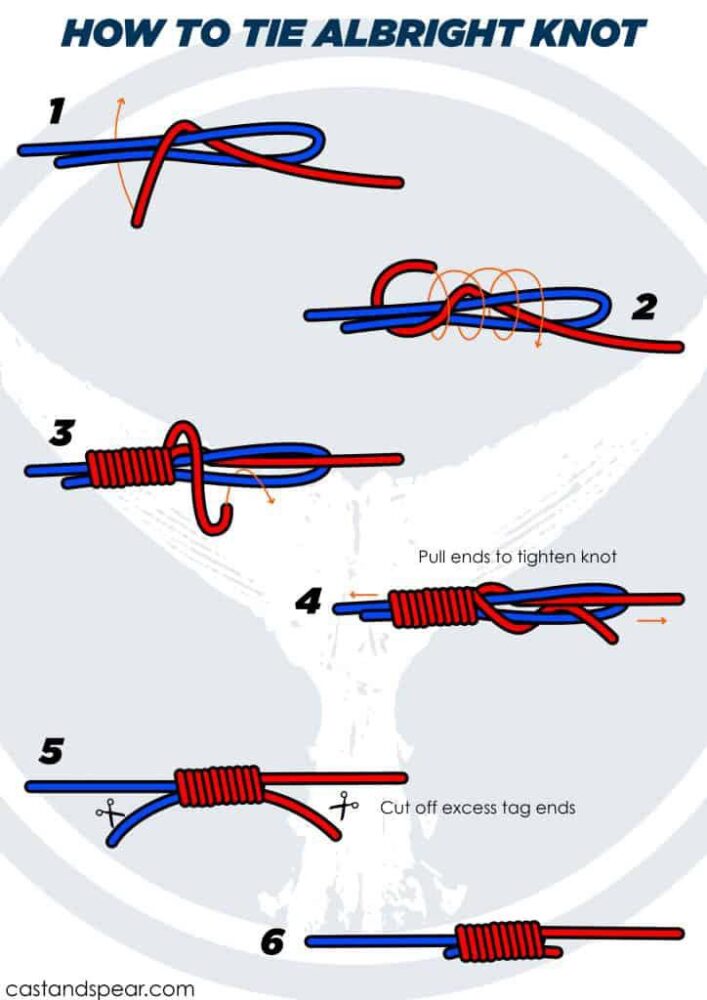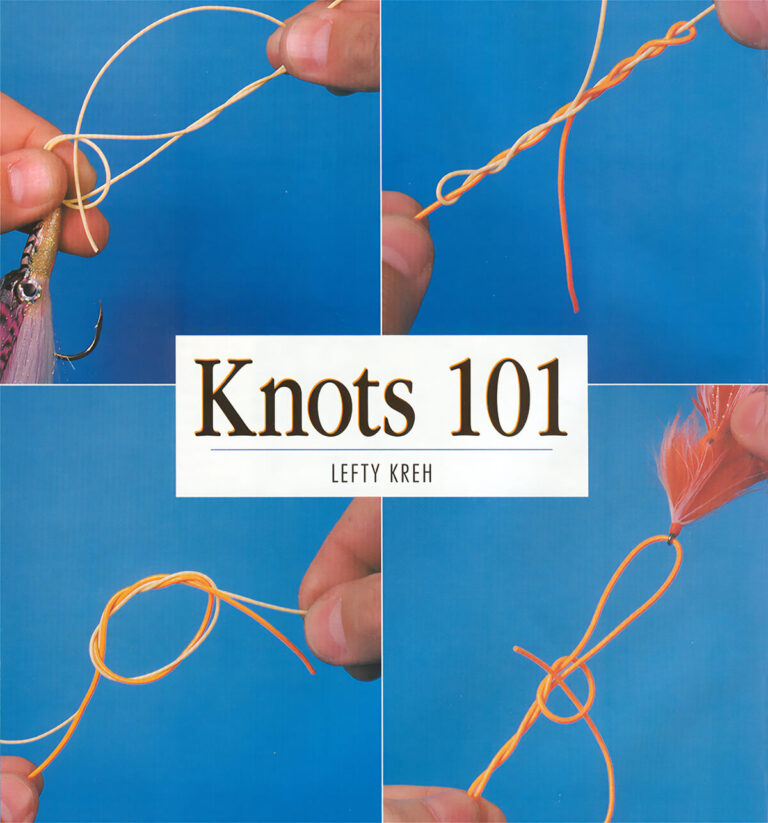Tie a Figure Eight Knot: Master the Art in 5 Simple Steps
To tie a Figure Eight Knot, simply create a loop and pass the working end of the rope through twice. The Figure Eight Knot is a versatile knot that is commonly used in a variety of activities, such as climbing, sailing, and camping.
It is known for its strength, reliability, and ease of untying, making it a popular choice among outdoor enthusiasts. We will guide you through the step-by-step process of tying a Figure Eight Knot, so you can master this essential knot and confidently use it in your outdoor adventures.
Whether you need to secure a rope to a tree, attach a line to a carabiner, or create a stopper knot, the Figure Eight Knot has got you covered. So, let’s dive in and learn how to tie a Figure Eight Knot like a pro.
Understanding The Figure Eight Knot
The Figure Eight Knot is a versatile and reliable knot that every adventurer, climber, and sailor should have in their arsenal. Its simple yet effective design allows it to secure ropes with ease, making it an essential skill to master. In this section, we will explore the importance of the Figure Eight Knot, the science behind its strength, and its wide-ranging applications.
Brief Introduction And Importance Of The Figure Eight Knot
The Figure Eight Knot, also known as the Flemish Knot or Stevedore Knot, is one of the most fundamental knots used in various activities. Initially developed in maritime settings, this knot has found its place in rock climbing, camping, and everyday scenarios where reliable rope connections are needed. Its primary function is to create a secure loop at the end of a rope or to join two ropes together.
One of the key reasons for the Figure Eight Knot’s popularity is its strength and security. When tied correctly, it creates a robust and secure connection that can withstand substantial loads. This makes it a crucial knot for individuals engaging in high-risk activities, where the failure of a knot could have severe consequences. Whether you are rappelling down a cliff, hoisting a sail, or securing heavy equipment, the Figure Eight Knot provides peace of mind.
The Science Behind The Figure Eight Knot And Its Applications
At first glance, the Figure Eight Knot may seem like a simple knot, but there is more to it than meets the eye. By examining its structure, we can understand why it is not only strong but also resistant to slipping and jamming. The knot consists of a symmetrical figure eight loop, formed by crossing the working end over and under the standing part. This structure ensures that the knot retains its shape even under tension, reducing the risk of loosening or failure.
The Figure Eight Knot finds its applications in various fields. In rock climbing, it is commonly used to secure the climbing rope to the harness, providing a reliable connection between the climber and the rope. In sailing, this knot is used to secure lines and rigging, ensuring that the sails are properly set and can withstand the force of the wind. Furthermore, the Figure Eight Knot is used in camping and backpacking to secure tents, tarps, and other gear.
To tie a Figure Eight Knot properly, follow these simple steps:
- Take the working end of the rope over the standing part.
- Pass the working end under the standing part.
- Bring the working end up and over the loop you just formed.
- Take the working end back down through the loop.
- Tighten the knot carefully, making sure each segment is snug.
Once mastered, tying the Figure Eight Knot becomes second nature. Practice is key to ensuring proficiency, as well as understanding the conditions and scenarios where this knot is most suitable.
In conclusion, the Figure Eight Knot is a vital skill for anyone involved in activities that require rope work. Its strength, reliability, and versatility make it a knot worth mastering. By understanding the science behind its structure and exploring its various applications, you can confidently tie this knot in any situation, ensuring your safety and success.
Step 1: Preparing The Rope
Tying a Figure Eight Knot requires proper preparation of the rope. This involves selecting the right rope and material, as well as cutting the rope to the appropriate length.
Selecting The Right Rope And Material For Tying The Figure Eight Knot
Before you can tie a Figure Eight Knot, it’s important to choose the right rope and material. The ideal rope for this knot is one that is strong, durable, and easy to work with. Consider using ropes made of materials such as nylon, polyester, or even braided ropes that provide extra strength.
When selecting the rope, make sure it is of high quality and can withstand the tension and pressure that may be applied to it. This will ensure the knot remains secure and reliable. Additionally, the rope should have a diameter appropriate for the intended purpose. Thicker ropes are generally used for heavier loads, while thinner ropes work well for lighter applications.
Cutting The Rope To The Appropriate Length For The Knot
Once you have chosen the right rope, the next step is to cut it to the appropriate length for tying the Figure Eight Knot. The length of the rope will depend on the specific use or application of the knot. It’s essential to have enough rope length to create the knot properly, as well as to have sufficient extra length for any adjustments or variations that may be needed.
Keep in mind that cutting the rope too short may render it unusable, while leaving it too long can result in unnecessary bulk and reduce the efficiency of the knot. Measure and cut the rope using a sharp pair of scissors or a utility knife, ensuring a clean and precise cut.
Remember, proper preparation of the rope is crucial for tying a secure and reliable Figure Eight Knot. By selecting the right rope and cutting it to the appropriate length, you lay the foundation for successfully tying this essential knot.
Step 2: Creating The Initial Loop
Forming the initial loop is the second step in tying a Figure Eight Knot. This step involves crossing the ends of the rope and wrapping one end around the other to create a loop. Proper execution of this step is crucial to ensure a secure and effective knot. Let’s dive into the details of this process.
Forming The Initial Loop By Crossing The Ends Of The Rope
The first part of creating the initial loop is to cross the ends of the rope. To do this, follow these simple steps:
- Hold the rope in your hands, making sure you have enough length to work with.
- Bring the right end of the rope over the top of the left end, crossing them.
- Adjust the rope as needed to ensure the crossing is on the desired spot.
By crossing the ends of the rope, you set the foundation for the Figure Eight Knot, setting yourself up for the next crucial step.
Wrapping One End Of The Rope Around The Other To Create A Loop
Now that you have crossed the ends of the rope, you can proceed with wrapping one end around the other to create a loop. Follow these steps:
- Take the right end of the rope and bring it behind the crossed part.
- Wrap the right end of the rope around both the crossed part and the left end.
- Continue wrapping the right end of the rope until you complete a full loop around the crossed part.
- Ensure that each wrap is snug and secure to avoid any slippage.
- Hold the left end of the rope firmly while completing the wraps.
This wrapping action creates a loop, forming the initial stage of the Figure Eight Knot. Make sure to maintain tension throughout this step to achieve a sturdy and reliable knot.
With the completion of this step, you are one step closer to mastering the Figure Eight Knot. Stay tuned for the next section, where we will cover the final steps to complete this versatile knot.
Step 3: Weaving The Second Loop
Now that you have successfully passed the working end of the rope through the first loop, it’s time to move on to the next step: weaving the second loop. This crucial step will complete the figure-eight knot and ensure its strength and durability.
Passing The Working End Of The Rope Through The First Loop
Once you’ve formed the first loop, take the working end of the rope and pass it through the loop from underneath, heading towards the left side. Make sure to keep a firm grip on both ends of the rope to maintain control throughout the process. This maneuver may sound simple, but it is an essential part of perfecting the figure-eight knot.
Forming A Second Loop By Twisting The Working End Around Itself
Now that the working end of the rope has been passed through the first loop, it’s time to move on to forming the second loop. To do this, take the working end and twist it around itself, creating a loop. Make sure the loop is tight and secure, as this will determine the integrity of the entire knot. Take your time and be deliberate in your movements to ensure a well-formed figure-eight knot.
In conclusion, weaving the second loop is a critical step in tying a figure-eight knot. By passing the working end of the rope through the first loop and forming a second loop around itself, you create a knot that is both strong and reliable. Now that you’ve mastered this step, you are well on your way to becoming a figure-eight knot tying expert.
Step 4: Tightening The Knot
After successfully creating a Figure Eight Knot, the next step is to ensure proper tightening of the knot. This step is crucial in order to guarantee the knot’s strength and reliability. In this section, we will discuss the importance of ensuring the knot is tightened correctly and how to check for any loose ends or twists.
Ensuring Proper Tightening Of The Figure Eight Knot
To ensure the Figure Eight Knot is securely tightened, follow these steps:
- Hold the working end of the rope, which is the end that is not already part of the knot, and the standing end, which is the end that is already incorporated into the knot.
- Pull both ends simultaneously and firmly to tighten the knot. It is crucial to exert enough force to eliminate any slack or looseness in the knot. This will enhance its overall strength and stability.
- Continue tightening until the knot becomes compact and snug. Be cautious not to over-tighten, as it may lead to distortion or damage to the rope.
- If you are using a thick rope or cord, you may need to use both hands to ensure maximum tightening. This will help in evenly distributing the force applied to the knot.
Checking For Any Loose Ends Or Twists In The Knot
Once you have tightened the Figure Eight Knot, it is crucial to check for any loose ends or twists in the knot. These issues may compromise the knot’s integrity and weaken its strength. Here’s how to perform a quick inspection:
- Observe the knot closely to visually inspect for any loose ends or twists. Pay attention to any protruding strands or irregularities.
- If you notice any loose ends, carefully retrace your steps and retighten the knot as necessary. Make sure to apply enough force to eliminate any potential slack.
- If there are any twists present, gently untwist them by manipulating the rope until the knot appears straight and well-formed.
- After addressing any loose ends or twists, visually inspect the knot once again to ensure it is secure and free from any irregularities.
By following these steps and thoroughly checking for any loose ends or twists, you can ensure the Figure Eight Knot is properly tightened and in optimal condition. This will provide you with the confidence and reliability needed, whether you are securing a rope for outdoor adventures, tying equipment, or any other application that requires a strong and secure knot.
Step 5: Testing The Strength Of The Knot
After successfully tying a Figure Eight Knot, the next step is crucial: testing the strength and reliability of the knot. This step is essential to ensure your safety and the effectiveness of the knot when used in practical situations. In this section, we will discuss various methods to test the strength of the Figure Eight Knot and highlight the importance of practicing and double-checking the knot before putting it into use.
H3discussing Methods To Test The Reliability And Strength Of The Figure Eight Knot/h3
Before relying on a Figure Eight Knot, it is crucial to evaluate its strength and reliability. One of the most common methods to test the knot is by applying gradual tension to it. Begin by pulling the working end of the rope and observing any slippage or signs of the knot loosening. If the knot remains secure and shows no signs of failure under a moderate amount of tension, it indicates that the Figure Eight Knot is reliable and strong enough for its intended purpose.
Another method to assess the strength of the knot is by subjecting it to a “pull and hold” test. In this test, pull the working end of the rope with a steady force and maintain the tension for a short duration. This test helps evaluate if the knot can withstand sudden pulls and unexpected movements without coming undone. If the knot holds firm without slipping or unraveling during this test, it demonstrates its reliability and strength.
Furthermore, visually inspecting the knot plays an important role in assessing its strength. Check for any signs of fraying, loose ends, or symmetry issues that may compromise the knot’s integrity. These visual observations can help identify potential weaknesses that should be addressed before relying on the knot in real-life scenarios.
H3importance Of Practicing And Double-checking The Knot Before Use/h3
Practicing and double-checking the Figure Eight Knot is essential to ensure its reliability and effectiveness. The more familiar you become with tying this knot, the faster and more confident you will be when using it. Regular practice allows you to refine your technique and minimize the risk of making mistakes that could compromise the knot’s strength.
Before using the Figure Eight Knot in a critical situation, it is crucial to double-check its integrity. This involves carefully examining the knot, ensuring it is tightly secured and correctly formed. Taking the time to double-check the knot before use provides peace of mind and minimizes the chances of structural failures that could lead to dangerous situations.
Remember, the strength of any knot lies in its proper formation and secure tying. By testing the Figure Eight Knot using various methods and practicing it until you are confident in your skills, you can trust this versatile knot to hold securely in a variety of situations.
Conclusion
Mastering the art of tying a Figure Eight Knot is essential for various activities such as rock climbing or sailing. This versatile knot provides a secure and reliable solution to join ropes or create loops. By following the step-by-step guide in this blog post, you can easily learn and practice this knot.
Remember, practice makes perfect, so keep honing your skills to become a knot-tying pro. Happy knotting!





